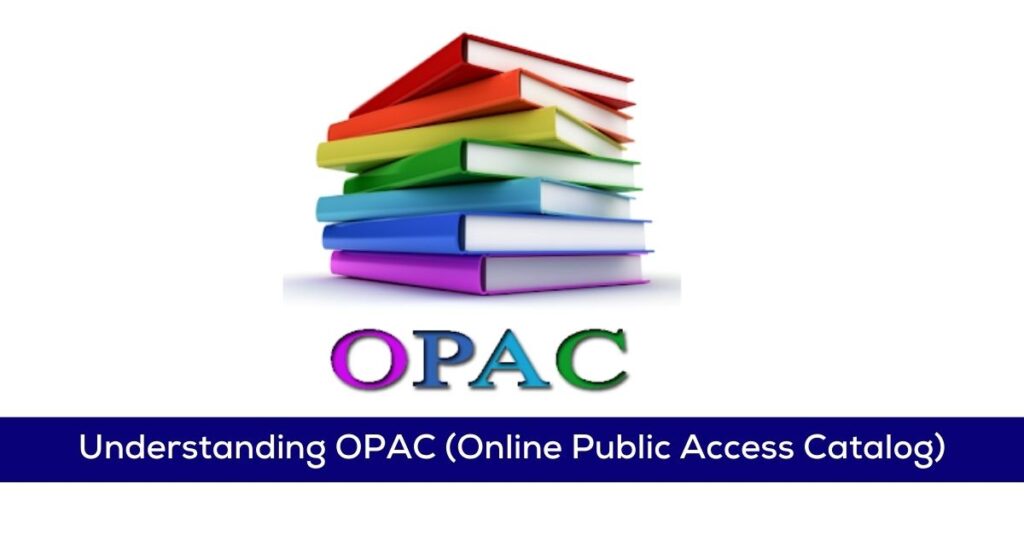Have you ever looked for books or articles in a library and seen the term “library catalog”? It’s a key part of finding what you need in a library. We’ll explore what a library catalog is and how it helps you find what you’re looking for.
A library catalog lists all the materials in a library, like books, journals, and digital stuff. It’s a central place to search and find what you need. Knowing how library catalogs work can make your library experience better.
A serene library setting with rows of wooden bookshelves filled with colorful books, a vintage card catalog with wooden drawers and brass handles in the foreground, warm lighting illuminating the space, and a faint glow of sunlight filtering through large windows.
Whether you’re studying, researching, or just love to read, learning about library catalogs is important. We’ll look at how they’ve evolved and the latest digital catalogs. This will help you use library resources better and find what you need more easily.
What is a Library Catalog?
A library catalog is a detailed list of what a library has. It helps people find and manage the library’s collection. It lists books, journals, digital items, and more.
Types of Library Catalogs
Library catalogs have changed a lot over time. They used to be on cards, but now they’re digital. Here are the main types:
- Card catalogs: These were old systems with cards in drawers.
- Online Public Access Catalog (OPACs): These are digital systems for searching the library’s collection online.
- Integrated Library Systems (ILS): These are software that manage everything in the library, including the catalog.
Core Functions and Purpose
A library catalog’s main job is to help people find what they need. It provides detailed information, lets users search for materials, and helps librarians keep track of the library’s collection.
Historical Evolution
Library catalogs started with handwritten records and then moved to cards. With technology, they became computerized systems. Now, they’re online and help users find resources easily.
A futuristic library database interface, featuring sleek digital screens, glowing virtual bookshelves filled with diverse volumes, vibrant data streams flowing through the air, and an intricate network of connections representing information retrieval, all set in a modern library environment with a blend of technology and traditional elements.
Library catalogs have improved a lot over time. They now offer better search tools and access to digital resources. They are key to making libraries work well today.

The Evolution of Library Catalogs: From Cards to Digital Systems
The library catalog has changed a lot since the old card-based systems. The start of online public access catalogs (OPACs) was a big change. These digital databases made it easier for people to find and get information, changing how we use libraries.
The move to integrated library management systems made things even better. These systems handle everything from books to people. Librarians can now organize and share books easily. Users get a better search experience.
A modern digital library catalog interface displayed on a sleek touchscreen monitor, surrounded by shelves of colorful books and digital devices, with a warm and inviting library atmosphere, soft ambient lighting, and a focus on user-friendly navigation features.
The use of online public access catalogs (OPACs) has improved how we use libraries. Now, people can search, place holds, and renew books online. This makes library resources easier to get than ever.
The change in library catalogs shows how technology has helped. From old cards to today’s library management systems, the catalog is key. It helps librarians and users manage and find information efficiently.
Key Components of Modern Library Catalogs
Today’s library catalogs have changed a lot from their old card-based days. They now have advanced features that help with information retrieval and resource discovery. Let’s explore the main parts that make up today’s library catalog.
Bibliographic Records
The bibliographic record is at the core of any library catalog. These records give a detailed look at each resource, like who wrote it, its title, when it was published, and more. Having accurate and well-organized bibliographic records is key for users to find and get the materials they need.
Search Functions
Modern library catalogs are known for their strong search tools. Users can use different search options, like simple keyword searches or more detailed filters. These tools, along with smart algorithms and easy-to-use navigation, help users find what they’re looking for quickly.
User Interface Elements
The design of today’s library catalogs is very important for a good user experience. They have clean designs, easy navigation, and work well on all devices. Features like saved searches and user accounts make it easier for users to customize the catalog to fit their needs.
Knowing the main parts of modern library catalogs helps librarians and info pros make these systems better. This leads to better information retrieval and resource discovery for everyone.
A visually intricate library catalog, featuring a variety of bibliographic records displayed on vintage wooden shelves, illuminated by soft ambient lighting. Each record is represented as a stylized card with vibrant colors, diverse textures, and unique patterns, showcasing information like titles, authors, and publication dates. The background includes stacks of books and decorative items, creating a warm and inviting atmosphere.
| Component | Description | Importance |
|---|---|---|
| Bibliographic Records | Detailed descriptions of library resources, including metadata such as author, title, and subject information. | Enables users to accurately identify and access the materials they need. |
| Search Functions | Advanced search capabilities, including keyword searches, filters, and boolean operators, that empower users to effectively locate resources. | Facilitates efficient resource discovery and helps users find the information they require. |
| User Interface | The design and layout of the library catalogue, including navigation, personalization features, and responsive design. | Ensures a seamless and intuitive user experience, enhancing information retrieval and patron satisfaction. |
Understanding OPAC (Online Public Access Catalog)
In today’s world, the old library card catalog is replaced by the Online Public Access Catalog (OPAC). OPACs are like virtual doors to the library’s vast collection. They make it easy for users to search, find, and get to the books, journals, and other resources they need.
At the heart of an OPAC is a detailed library database. It holds all the info about what the library has. This includes titles, authors, when and where it was published, and what it’s about. Users can use the book search to quickly find what they need.
Key Features of OPACs
- Remote access: OPACs let users search the library’s collection from anywhere. This makes it easy to explore and find resources without having to go to the library.
- Advanced search capabilities: OPACs have many search options. Users can search by keyword, author, title, or subject. They can also refine their search by different criteria.
- Real-time availability: OPACs show the latest info on what’s available and what’s not. This helps users know if a book is on the shelf or if it’s out.
- Personalized features: Many OPACs have features just for you. Users can make reading lists, renew books, and get alerts about new books or holds.
Online public access catalogs have changed how we use libraries. They offer detailed databases, advanced search tools, and easy-to-use interfaces. OPACs are now key tools for both library users and researchers.
“The OPAC is the heart of the modern library, connecting users to a vast trove of knowledge with just a few clicks.”

Essential Features of Library Management Systems
Modern library management systems are more than just catalogs. They offer a wide range of features to make library work easier. These systems help improve how libraries manage their collections and help users find what they need.
Circulation Management
A key part of these systems is circulation management. It lets librarians track who has what, when it’s due back, and more. This keeps the library’s collection inventory current and easy for everyone to use.
Resource Tracking
Resource tracking is also crucial. It gives detailed info on what the library has, where it is, and its status. This makes it simpler for librarians to keep everything organized and up-to-date.
User Management Features
These systems also have advanced user management tools. Librarians can manage user accounts, track borrowing history, and set access levels. This makes it easier for users to find and use library resources.
| Feature | Description |
|---|---|
| Circulation Management | Tracks the borrowing and returning of library materials, manages due dates, overdue items, and holds or reservations. |
| Resource Tracking | Provides detailed information about the library’s holdings, including availability, location, and status of each item in the collection. |
| User Management | Allows librarians to create and maintain patron accounts, track borrowing history, and manage user privileges. |
With these key features, modern library management systems are essential. They make libraries more efficient and user-friendly. They help manage collections and make finding resources easy.
Cataloging Standards and Classification Systems
Keeping a library catalog organized is key for finding information. Cataloging standards and classification systems help a lot. They make sure records are made, stored, and found the same way. This makes it easier for users to find what they need.
The Anglo-American Cataloguing Rules (AACR) and Resource Description and Access (RDA) are big names in this field. They tell libraries how to describe books, journals, and digital stuff. Following these rules helps libraries make accurate records for easy information retrieval.
Classification systems are also important for organizing libraries. The Dewey Decimal System and the Library of Congress Classification (LCC) are the top choices. They sort materials by subject, making it simple for users to find what they’re looking for.
| Cataloging Standard | Description |
|---|---|
| Anglo-American Cataloguing Rules (AACR) | A set of guidelines for creating bibliographic records, with a focus on describing print resources. |
| Resource Description and Access (RDA) | A more recent standard that expands on AACR, providing a framework for describing a wider range of materials, including digital resources. |
Libraries follow these cataloging standards and use strong classification systems. This makes their bibliographic records easy to find and use. It also makes the library a better place for everyone to find what they need.
How to Effectively Search Library Catalogs
Searching through library catalogs can seem overwhelming. But, with the right strategies, you can find a wealth of information. Whether you’re looking for a book, researching a topic, or finding new resources, learning to search library catalogs is key. It helps you find what you need quickly and efficiently.
Basic Search Techniques
Begin by using the simple search bar on most library catalog sites. Type in keywords related to your search. The system will then show you relevant results. To get more specific, use filters like author, title, subject, or publication date.
Advanced Search Strategies
- Use Boolean operators (AND, OR, NOT) to refine your search. This helps you find exactly what you’re looking for.
- Try wildcard characters like asterisks (*) or question marks (?) to find different forms of a word.
- Check out the advanced search options. They often let you search within specific fields or by format (like books or journals).
Boolean Operators Usage
Boolean operators can make your searches much better. Here’s a quick guide on how to use them:
| Operator | Description | Example |
|---|---|---|
| AND | Narrows the search by requiring all terms to be present | Shakespeare AND plays |
| OR | Broadens the search by including results with either term | fiction OR novels |
| NOT | Excludes results containing the specified term | history NOT American |
By learning these techniques, you’ll search library catalogs with ease. You’ll find the resources you need for research, exploration, or just to learn something new.
Benefits of Digital Library Catalogs
Digital library catalogs have changed the game for libraries and users. They offer a new way to find and use information. This makes resource discovery faster and more fun.
One big plus is that you can use them anywhere, anytime. This is especially true during times like the COVID-19 pandemic. It lets people keep learning and borrowing from home.
These catalogs also search faster and better. You can find books, authors, or topics quickly. And you can sort your results easily. This makes finding what you need quicker and more enjoyable.
Another great thing is how they work with other digital stuff. You can find e-books, articles, and videos all in one place. This makes it easier to explore and learn more.
Lastly, they have cool features like personalized book picks and reviews. You can even share what you like. This makes the library feel more like a community.
In short, digital library catalogs bring lots of good things. They make it easier to find and use information. They’re a big step forward for libraries and their users.
Common Challenges and Solutions in Library Cataloging
Keeping a library’s management system running smoothly is tough. Librarians face many hurdles, from managing data to improving user experience. They work hard to make sure everyone can find what they need easily.
Data Management Issues
Good data is key for a library’s catalog. But, handling big collections of books and records is hard. Librarians deal with problems like bad metadata and old info.
They use strong data plans and automation to solve these issues. This keeps the catalog accurate and up-to-date.
Technical Challenges
Switching to digital systems has brought new tech problems. Libraries struggle with old systems, keeping software current, and fixing bugs. Working with tech experts and using cloud services helps.
This lets libraries focus on helping people find information.
User Experience Improvements
Today, people want easy access to library info. Libraries need to make their catalogs user-friendly. They do this by listening to feedback and making their catalogs better over time.
Libraries can make their catalogs better by tackling these challenges. They use new ideas and keep improving. This makes their collections more useful and accessible to everyone.

Future Trends in Library Cataloguing Systems
The world of information management is changing fast. Library cataloging systems are set to see big improvements. One key trend is the use of artificial intelligence (AI) in search algorithms. This makes finding resources smarter and more intuitive.
AI uses machine learning to understand what users are looking for. It gives personalized suggestions and makes finding information easier. This is a big step forward in how we search for things online.
Linked data technologies are also becoming more popular. They help libraries link their catalogs to bigger knowledge bases. This makes it simpler to find related content and understand library resources better.
As libraries grow, linked data will be key in improving how we find and use information. It’s a big part of making resource discovery and information retrieval better.
The future also sees libraries working more closely with knowledge management platforms. This means users will have a smoother experience. They’ll find it easier to discover, retrieve, and share information.
This integration will make libraries even more important for learning and information. It will make the user experience better and strengthen the library’s role in our lives.
FAQs
What is a library catalog?
A library catalog lists all the items in a library. It’s like a database that helps you find what you need. You can search for books, journals, and more.
What are the different types of library catalogs?
There are two main types of library catalogs. 1. Card catalogs use index cards for information. 2. Online Public Access Catalogs (OPACs) are digital and can be accessed online.
How have library catalogs evolved over time?
Library catalogs have changed a lot. They used to be on cards, but now they’re digital. This change has made finding information easier.
What is an Online Public Access Catalog (OPAC)?
An OPAC is a digital catalog that lets you search and access library items online. It makes finding information easy and fast.
How can you effectively search library catalogs?
To search library catalogs well, try these tips. 1. Use basic searches by keywords or title. 2. Try advanced searches with Boolean operators. 3. Use different search criteria and understand the catalog’s features.
